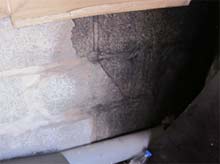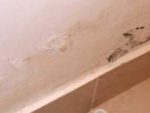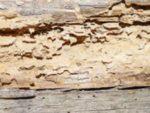Damp causes damage to buildings in many different ways. Damp can cause mould and wet rot, rotting in timber (which in turn can attract insect infestation). Damp walls can suffer from Freeze/Thaw action which can blow the surface off bricks and stone, and damp can also cause plaster or render to swell, crack and crumble.

Damp on internal blockwork walls
Mould and rot are very bad for the structure of the building, Rot will cause damage, but mould, and especially black mould has spores that can affect your health. This is especially dangerous for children, the elderly and especially asthmatics and others with breathing difficulties. It should be treated along with the underlying cause, as soon as possible.
Basically water is essential and unavoidable, but you want to make sure you keep it very well controlled in your home.
There are various ways your house can suffer from Damp.
Water can get into your home from above: for example if you have a leaking roof, or ill fitting windows and doors.
Water can get into your home by ‘ingress’, where water is soaking in through the wall material. This can be caused when water is allowed to run down the wall, for example when a gutter is damaged, or where an overflow continually runs unchecked.
Or damp can be cased by a leak from somewhere inside the house, for example from a damaged pipe, or a leaking waste on appliances or sanitary fittings.
Finally Damp can come in from below, known as rising damp. This can happen if your property does not have a damp proof course (DPC), or where the DPC is damaged. It can also occur if the DPC has been breached by a new building being added or if earth is piled up against the building, forming a bridge above the DPC that moisture can travel along.
All modern houses are built with a damp proof course in place. A DPC is a special heavy-duty plastic sheet that is laid at 150 mm above ground level, and before the floor slab (where there is one) is cast. An earlier form of DPC involved laying a course of slate in the walls, because slate is an impermeable stone and resisted rising damp in the walls.
A vertical damp proof course works in the same ways as horizontal DPC. A horizontal DPC stops damp rising up from the ground below and through your walls, a vertical DPC is used to stop water travelling sideways through masonry and other surfaces which may come in contact with each other. Vertical DPCs are usually installed around windows and doors when they are installed in cavity walls.




